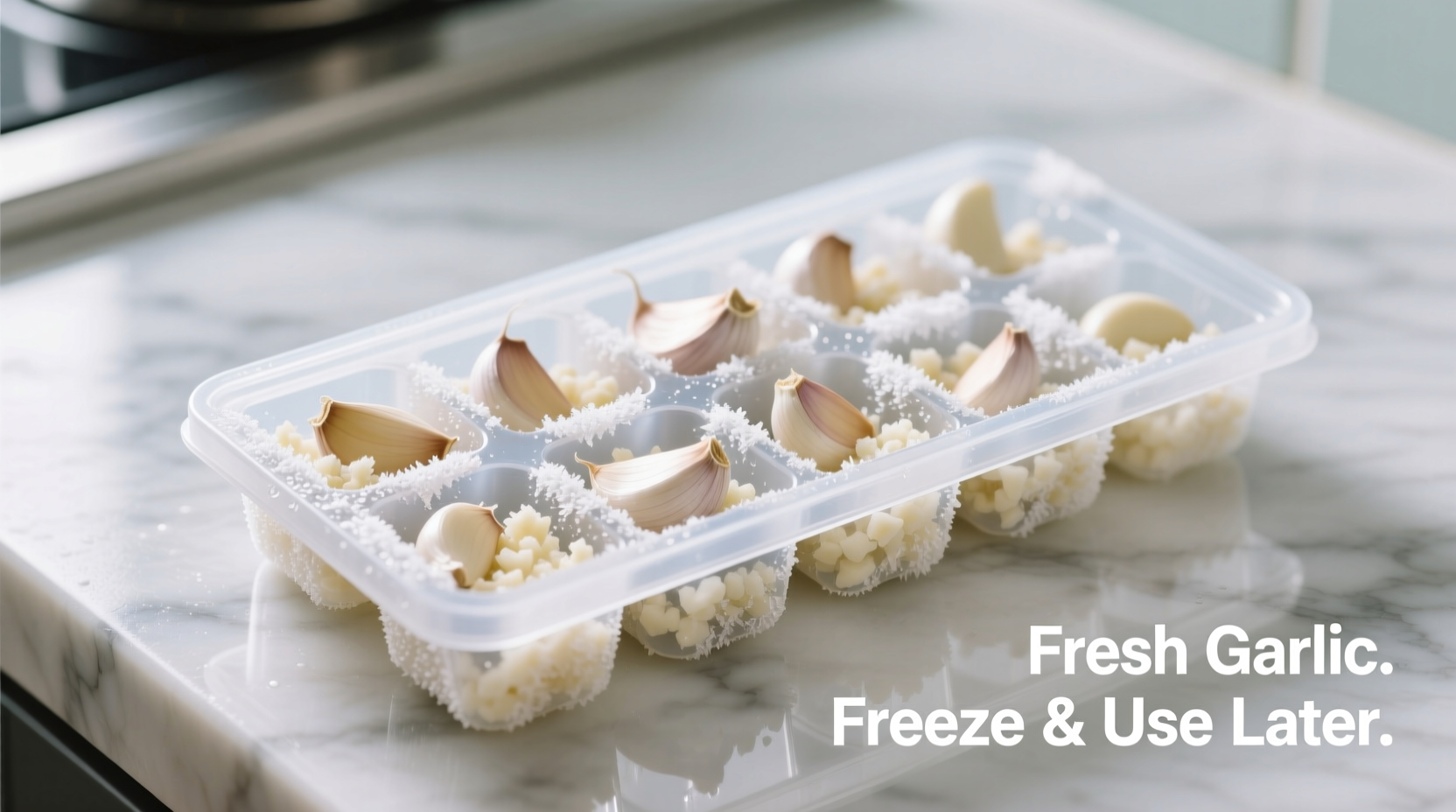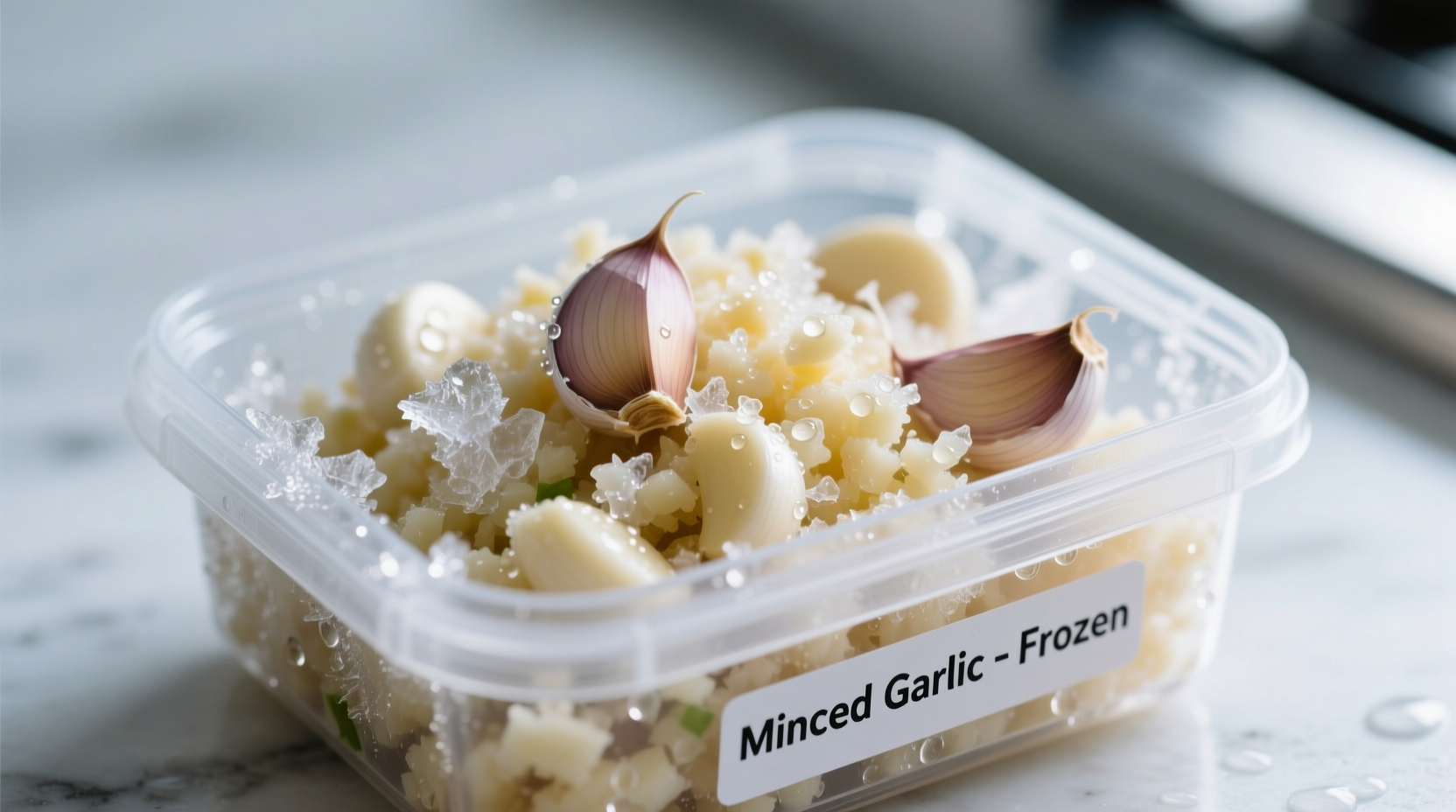Garlic lovers know the frustration of buying fresh bulbs only to watch them sprout or mold before you can use them all. Freezing minced garlic solves this common kitchen dilemma while delivering convenience without significant flavor compromise. As a culinary professional who's tested numerous preservation methods, I can confirm that frozen minced garlic performs remarkably well in most cooked dishes.
The Science Behind Freezing Minced Garlic
When garlic is minced, it releases allicin—the compound responsible for its distinctive flavor and health benefits. Freezing slows the enzymatic reactions that cause garlic to degrade, preserving these valuable compounds far better than refrigeration. According to research from the National Center for Home Food Preservation, properly frozen garlic maintains 85-90% of its original flavor profile for up to one year.
Unlike whole garlic cloves that can become mushy when frozen, pre-minced garlic actually benefits from freezing because the cellular structure has already been broken down. The key is using proper techniques to prevent freezer burn and flavor degradation.

Step-by-Step Freezing Method for Best Results
Follow this professional-tested approach to freeze minced garlic with optimal flavor retention:
Preparation Options
You have three reliable methods for preparing minced garlic before freezing:
- Dry Freezing - Spread minced garlic in a single layer on parchment paper, freeze until solid (about 2 hours), then transfer to airtight containers
- Oil Suspension - Mix minced garlic with olive oil (1:1 ratio) before freezing—ideal for direct cooking applications
- Water Method - Place minced garlic in ice cube trays, cover with water, then freeze—best for soups and stews
Portioning Strategy
Smart portioning makes frozen garlic incredibly convenient:
- Standard cooking portions: 1 teaspoon per cube (about 1 clove equivalent)
- Larger portions: 1 tablespoon cubes for recipes requiring substantial garlic
- Freeze in silicone molds for easy portion removal
Storage Containers That Work Best
Not all containers perform equally for frozen garlic:
| Container Type | Best For | Shelf Life |
|---|---|---|
| Air-tight glass jars | Dry minced garlic | 12 months |
| Silicone ice cube trays | Oil or water suspended garlic | 10 months |
| Vacuum-sealed bags | Large batches | 14 months |
| Plastic freezer bags | Budget option | 8 months |
Always label containers with the date and portion size. Remove as much air as possible from bags before sealing to prevent freezer burn.
How Long Minced Garlic Stays Fresh Frozen
Understanding the timeline helps maximize quality:
- 0-3 months: Peak flavor and texture—virtually indistinguishable from fresh
- 3-6 months: Slight flavor mellowing but still excellent for most applications
- 6-12 months: Noticeable flavor reduction but still usable in cooked dishes
- 12+ months: Significant quality degradation—best discarded
The USDA Food Safety and Inspection Service confirms that frozen garlic remains safe indefinitely at 0°F (-18°C), but quality diminishes over time. For best results, use within 6 months.
Using Frozen Minced Garlic in Your Cooking
One of the biggest advantages of frozen minced garlic is how seamlessly it integrates into cooking:
- Direct cooking: Add frozen garlic cubes directly to hot oil or dishes—no thawing needed
- Sautéing: Frozen garlic in oil thaws quickly in a hot pan, preventing burning
- Baking: Incorporate directly into bread doughs or savory pastries
- Raw applications: Thaw in refrigerator for 30 minutes before using in dressings
Professional chefs often prefer frozen minced garlic for consistent portioning and reduced prep time during service. The slight flavor mellowing that occurs during freezing actually benefits some dishes by creating a more rounded garlic profile.
Troubleshooting Common Freezing Issues
Avoid these common problems with these solutions:
- Freezer burn: Caused by air exposure—always use airtight containers and remove excess air from bags
- Odor transfer: Garlic absorbs other flavors—store away from strong-smelling foods
- Mold growth: Usually from improper sealing—ensure containers are completely dry before use
- Texture changes: Oil suspension method prevents clumping and maintains texture
According to culinary testing at the Culinary Institute of America, adding a small amount of lemon juice (1 teaspoon per cup of minced garlic) before freezing can help preserve both color and flavor for extended periods.
Freezing vs. Other Preservation Methods
How does freezing compare to alternatives?
- Refrigeration: Minced garlic lasts only 5-7 days in the fridge versus 12 months frozen
- Canning: Requires precise pH control and processing—freezing is simpler and preserves more flavor
- Drying: Changes flavor profile significantly—frozen garlic maintains fresh characteristics
- Paste in oil: Room temperature storage risks botulism—freezing eliminates this danger
Food safety experts from the USDA Food Safety and Inspection Service strongly recommend freezing over room-temperature oil storage due to botulism risks with the latter method.
Maximizing Flavor in Your Frozen Garlic
For the best possible results:
- Use fresh, firm garlic bulbs without sprouting
- Freeze within 24 hours of mincing for optimal flavor
- Add a pinch of salt before freezing to stabilize flavor compounds
- Store at consistent freezer temperature (0°F/-18°C or lower)
- Keep away from freezer door where temperature fluctuates
Remember that frozen garlic works best in cooked applications. While it's possible to use thawed frozen garlic in raw preparations like salad dressings, the texture won't be identical to freshly minced garlic.











 浙公网安备
33010002000092号
浙公网安备
33010002000092号 浙B2-20120091-4
浙B2-20120091-4